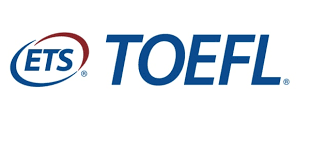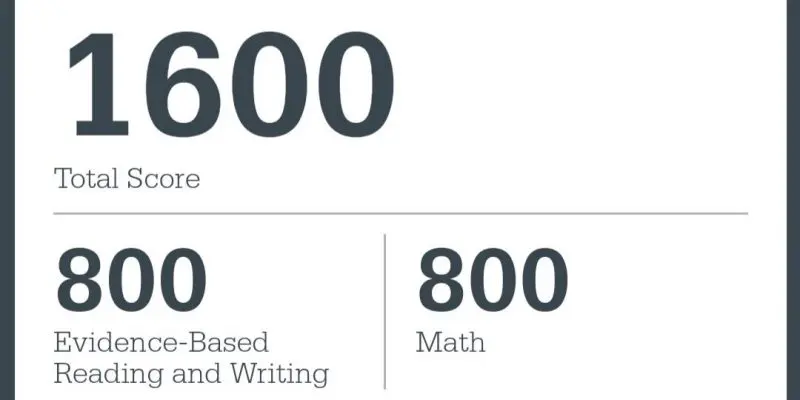Should I take the TOEFL exam ?

Why should I take both the SATs and ACTs
January 20, 2022
SAT in GHANA
July 8, 2022The TOEFL (“Test of English as a Foreign Language”) is a standardized test that measures a test-taker’s mastery of the English language. TOEFL scores are primarily used by universities as part of the admissions process.
Typically, those who take the TOEFL want to attend university or graduate school abroad. But anyone who needs to demonstrate a mastery of English for an academic purpose can take the TOEFL. This includes anyone applying to a foreign high school, exchange program, community college, or for a student visa.
The TOEFL focuses on how English is used in an academic setting, which is why schools and universities use TOEFL scores for admissions purposes. The reading passages in the TOEFL use formal, academic language and high-level vocabulary rather than casual or conversational English.
The TOEFL is intended mainly for students looking to attend a university or graduate school program in an English speaking country. But people can also take the TOEFL for other purposes. Those who may take the TOEFL include:
- Students entering into a high school in an English speaking country
- Students attending 2-year community college programs in an English speaking country
- People who are looking to be licensed or certified in a particular field
- People who need to demonstrate their mastery of the English language for immigration purposes
- Those who simply want to assess their English language skills in a formal setting
The creators of the test recommend that students be at least in the 11th grade (or 17 years of age) before attempting to take the TOEFL. The test requires you to read some difficult passages and be familiar with some high-level vocabulary and most students are not exposed to this type of language before the 11th grade.
Not every college or university requires incoming international students to take a TOEFL. Those that do generally ask for the TOEFL if:
- English is not your primary language
- If your primary language of instruction hasn’t been English for at least five years
Some schools will waive the need for you to take a TOEFL test if you have:
- Scored in a certain percentile on the English, reading, and writing sections of the ACT or SAT
- Taken a TOEFL sometime in the past two years
- Earned a diploma or degree from an English-speaking country
Academic language is often dense and formal, so even people who’ve studied English for many years can struggle in an English academic environment. Before a university accepts you into an academic program, the admissions board wants to know that you can handle the course load of an English-based program: they use your TOEFL score as a standardized metric for your English skills.
If you’re an international student applying to schools in a country where the primary language is English, you’ll most likely be required to take the TOEFL as part of your application. Many schools accept scores from other English tests as well, but the TOEFL is currently the most popular English-language assessment test.
9,000 universities in 130 countries accept TOEFL scores, including the US, Canada, the UK, Australia, and New Zealand. All schools in the top 100 universities in the world accept the TOEFL. If you’re interested in attending an English language university, it’s likely that your school of choice will either require or accept TOEFL scores.
Many schools will provide a minimum score you must earn on the TOEFL to be accepted. All schools have different cutoffs, but you will need at least a 70 for an unconditional acceptance at almost any US school. More selective schools, however, tend to require higher TOEFL score cutoffs, since they have higher academic standards and require students to have a mastery or near-mastery of English.
Keep in mind that your overall application is still the most important factor for university acceptance, so don’t worry too much about your exact TOEFL score. As long as you meet or exceed the minimum TOEFL score for your school, you don’t need to worry about having a high TOEFL score. For instance, if your school’s minimum TOEFL score is 90 and you got a 91, don’t take the test again just to get a higher score. You met the threshold. Now it’s time to focus on other parts of your application, like your essay or your SAT/ACT scores.
If you’re feeling nervous about taking the TOEFL, it may help to think of the test as a tool to help you rather than an obstacle to be overcome. The test helps you figure out early if an English-based university setting would be a right fit for you.
If possible, try to take the TOEFL well in advance of your applications. This way, if you don’t score well the first time you take the test, all it tells you is that you need more practice before you make the huge move to study abroad. You’re allowed to take the TOEFL test multiple times. So if you were disappointed with your score, take the opportunity to learn from your mistakes and prepare for the next time you take the test.
The TOEFL is a long and complicated test, but knowing how it works is the first step to conquering it. So let’s look at the different types of TOEFL tests available and how the test is structured.
The vast majority (97%) of all TOEFLs taken are Internet-based tests (IBTs). For an IBT TOEFL, students take the test on a provided computer in a testing room, usually next to several other people also taking the test.
The minority (3%) of all TOEFLs are paper-based tests (PBTs). The PBT doesn’t test students’ speaking skills, so the test-makers are phasing out these types of tests. As of 2016, you can only take a PBT in test centers where internet testing isn’t available.
Many universities will only accept IBT TOEFL scores. So make sure to double-check your school international admissions pages if you’re taking the PBT.
No matter the type of TOEFL you take, you can take the test as many times as you want to. The only exception to this rule is that you cannot take the test again if you’ve taken a TOEFL any time in the past 12 days.
TOEFL Exam Structure
The test has four sections and will typically take a total of 4.5 hours to complete. These four sections are: reading, listening, speaking, writing
Each section is scored out of 30. These section scores are then added together for a final, total score of 120 points.
Section 1: Reading
The TOEFL reading section is completely multiple choice. Each reading section will have three or four written passages with 12-14 questions for each passage. (Typically, tests with three written passages will have more questions per passage than tests with four written passages.) Reading passages can be on any academic topic, including science, history, or literature.
Section 2: Listening
The TOEFL listening section is also completely multiple choice. Each listening section will include four to six lectures with six questions each and two or three conversations with five questions each.
Section 3: Speaking
The TOEFL speaking section is a little more complicated than the reading or listening section. But, luckily, each speaking section will always follow the same pattern, so you can prepare yourself for it.
In the speaking section, you will get six speaking prompts, or “tasks.” The first two tasks will be independent and ask you to talk about your own thoughts and experiences. The final four tasks will be integrated tasks, where you must answer questions based on a given conversation or piece of text.
Let’s break down each speaking task one-by-one.
2 Independent Speaking Tasks:
- Task 1 will ask about your interests or your thoughts on a particular topic.
- Task 2 will ask you to give your opinion and choose between two given options.
4 Integrated Speaking Tasks:
- Task 3 asks you to read a short text and then listen to a dialogue between two speakers discussing that same topic (usually, them agreeing or disagreeing about parts of the article). You’ll then summarize what the speaker’s opinions are and compare that to the text.
- Task 4 gives you two lectures on the same topic–one spoken and one written. You’ll then summarize the information from each lecture or answer a more specific question.
- Task 5 has you listen to a conversation between two people who are discussing a problem with two possible solutions. You’ll then summarize the content and give your opinion (no text to read). (Note that Task 5 is often the most difficult listening task because you must discuss three things: what the student said, the student’s suggested solutions to a problem, and what solution you prefer and why.)
- Task 6 asks you to listen to a monologue and then summarize or answer a more specific question about the information (no text to read).
Section 4: Writing
There are two parts to the TOEFL writing section: one integrated task and one independent task.
1 Integrated Writing Task (20 minutes)
- For this section, you must both read a short passage and listen to a lecture. You will then respond to/summarize the discussion.
1 Independent Writing Task (30 minutes)
- For this section, you’ll usually be asked to choose between two options and give your reasons and examples why you chose the way you did. For example, “Do you agree or disagree that most parents are too controlling of their children?” or “Do you believe that people are inherently ‘good’ or ‘bad?’”
Half the battle of taking a standardized test like the TOEFL (aka the Test of English as a Foreign Language) is in understanding it. Maybe you discovered that the TOEFL isn’t the right test for you. Or maybe you’ve discovered that you’ll have to take it to get into your dream school. If that’s the case, then a little planning will help see you through.
Regardless of whether you’re just starting to study for the TOEFL, or if you’re about to take it for the 10th time, the more you know about the test, the better prepared you’ll be. Good luck!
Source https://www.prepscholar.com/toefl/blog/what-is-toefl/





3 Comments
I must thank you for the efforts youve put in penning this site. I am hoping to check out the same high-grade blog posts by you in the future as well. In fact, your creative writing abilities has motivated me to get my very own blog now 😉
Where there is a will, there is a way.
There’s definately a great deal to know about this issue.
I love all the points you made.